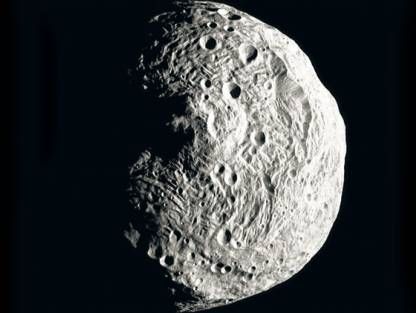
Houston: With the space shuttle now history, NASA's next great mission is so audacious, the agency's best minds are wrestling with how to pull it off: Send astronauts to an asteroid in less than 15 years.
The challenges are innumerable. Some old-timers are grousing about it, saying going back to the moon makes more sense. But many NASA brains are thrilled to have such an improbable assignment. And NASA leaders say civilization may depend on it.
An asteroid is a giant space rock that orbits the sun, like Earth. And someday one might threaten the planet.
But sending people to one won't be easy. You can't land on an asteroid because you'd bounce off - it has virtually no gravity. Reaching it might require a NASA spacecraft to harpoon it. Heck, astronauts couldn't even walk on it because they'd float away.
NASA is thinking about jetpacks, tethers, bungees, nets and spider webs to allow explorers to float just above the surface of it while attached to a smaller mini-spaceship.
Such a ship - something like a Star Trek shuttlecraft melded with a deep sea explorer with pincer-like arms - is needed just to get within working distance of the rock. That craft would have to be big enough for astronauts to live in for a week or two. They'd still need a larger habitat for the long term.
It would take half a year to reach an asteroid, based on current possible targets.
The deep space propulsion system to fly such a distance isn't perfected yet. Football-field-sized solar panels would help, meaning the entire mothership complex would be fairly large. It would have to protect the space travelers from killer solar and cosmic ray bursts. And, they would need a crew capsule, maybe two, for traveling between the asteroid complex and Earth.
And all those parts - mini-spaceship, habitat/living area, crew capsule, solar arrays and propulsion system - would have to be linked together in the middle of space, assembled in a way like the International Space Station but on a smaller scale.
Beyond all those obstacles, NASA doesn't even know which asteroid would be the best place to visit.
All this has to be ready to launch by 2025 by presidential order.
"This is the big step," said Kent Joosten, chief architect of the human exploration team at Johnson Space Center. "This is out into the universe, away from Earth's gravity completely... This is really where you are doing the Star Trek kind of thing."
Source: Associated Press



Apparently the U.S. air farce found another excuse to increase spending.